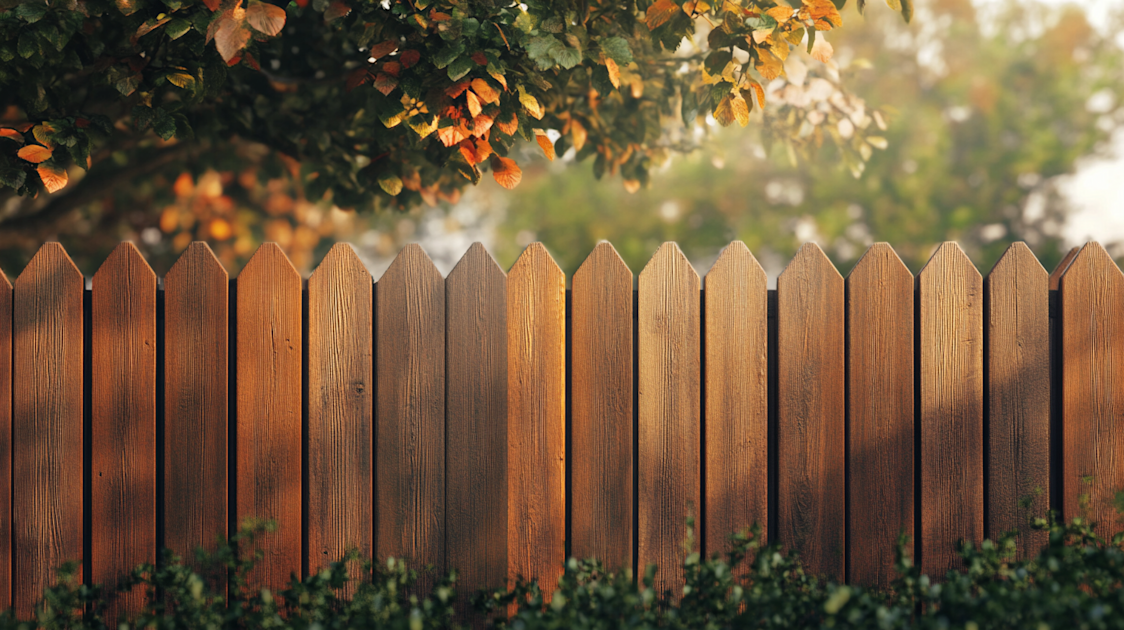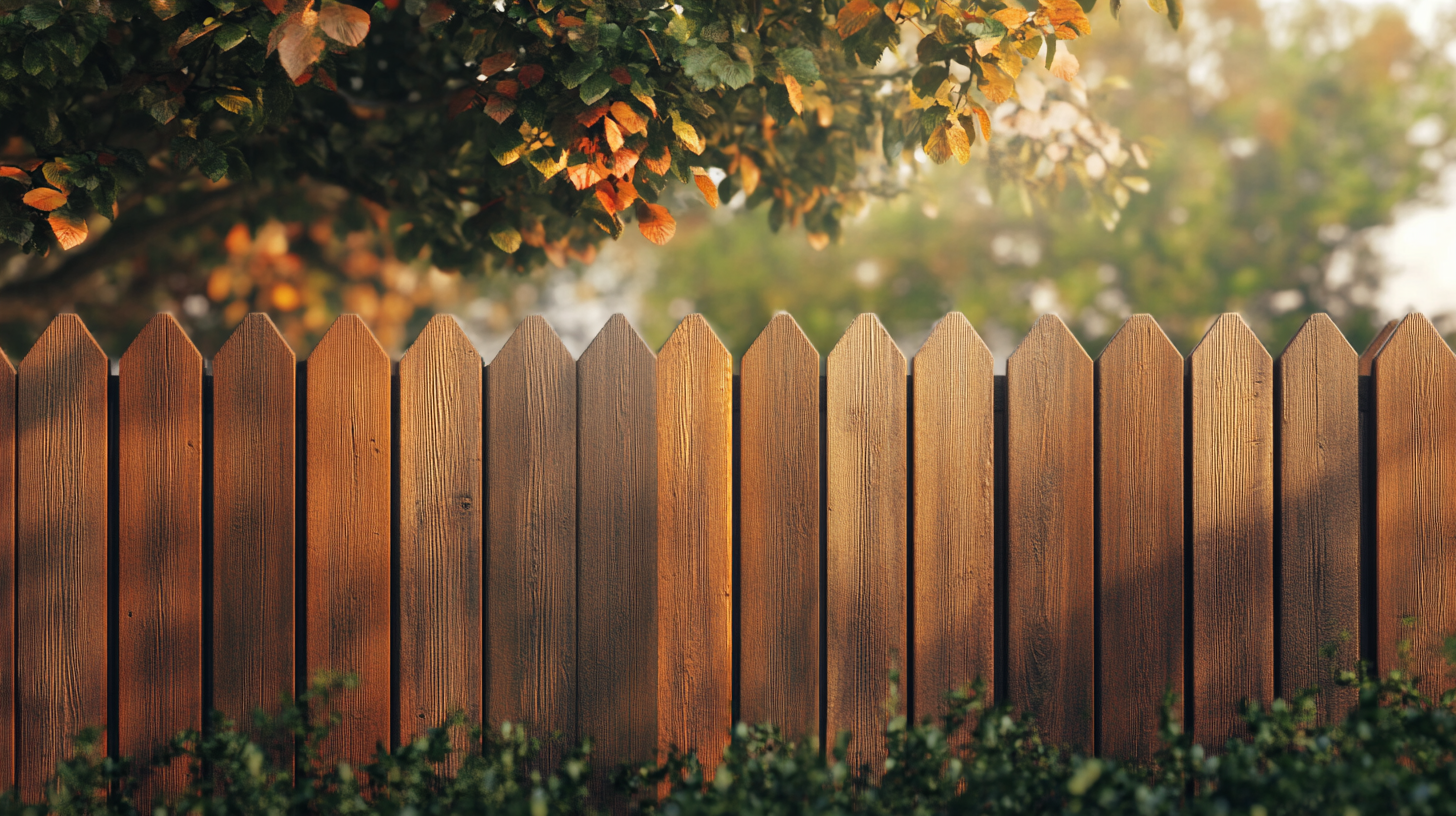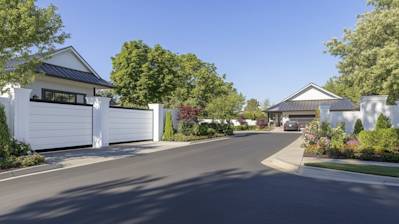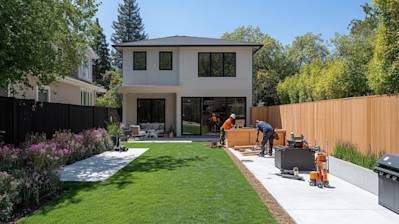When it comes to enhancing privacy and security for your property, the right type of fencing plays a pivotal role. In this article, we will explore one such reliable option—the Board on Board Fence. Besides a classic appeal, this type of fencing offers durable nature and exceptional privacy, thereby making it a preferred choice among homeowners.
Defining a Board on Board Fence
A Board on Board fence refers to a specific fence style where one board is fixed upright against another for a layered form factor. This structure surpasses the conventional side-by-side fencing setup. The design includes an overlapping of boards, leaving no gaps, thus ensuring maximum privacy.
How a Board on Board Fence is constructed
To appreciate this fence's unique features, we must first understand its construction. Erecting a board on board fence involves securing alternating boards on either side of the central rails. The boards overlap, which covers gaps that might appear over time due to wood shrinkage. On completion, you get a fence with two identical sides, which is a desired aesthetics feature for many homeowners.
The Best Materials for a Board on Board Fence
Selecting the right type of wood significantly impacts the lifespan and durability of the fence. The popular choices for a board on board fence include:
- Cedar
- Redwood
- Pressure-treated Pine
- Spruce
Cedar and redwood resist rotting and insect damage more effectively. On the other hand, pressure-treated pine proves cost-effective and long-lasting. Spruce is another inexpensive option but calls for routine maintenance to withstand challenging weather conditions.
Estimating the Cost of a Board on Board Fence
Several factors contribute to the cost of a board on board fence, including:
- Wood type: High-end woods like redwood or cedar will cost more than budget choices like spruce or pine.
- Fence Height: The taller the fence, the more material is required, thereby costing more.
- Local labor rates: Depending on where you live, the cost of hiring professionals to install the fence will vary.
For a seamless experience, ensure to obtain multiple quotes from different contractors.
Maintenance of Board on Board Fence
While board on board fences require minimal maintenance, periodic inspection allows you to identify potential issues such as rot or pest infestation early. For longevity, consider:
- Periodic cleaning: Cleaning the fence will prevent the build-up of grime, mildew, and mold on the surface.
- Regular painting or staining: This protects the fence from UV damage, and repels insects.
- Applying preservatives: It will help fence resist moisture absorption, reducing the chances of rotting.
Privacy and Security with Board on Board Fence
Due to their overlapping design, board on board fences provide a high level of privacy. They also serve as effective wind barriers when installed perpendicular to prevailing wind directions.
In terms of security, these fences create a formidable barrier against intruders, making it difficult for them to enter your property. By opting for a taller fence, you can increase the degree of security.
Frequently Asked Questions about Board On Board Fence
What materials are most often used for board on board fences?
Wood is the most commonly used material for constructing a board on board fence, particularly because of its availability, durability, and the ease with which it can be worked. The types of wood used most frequently for these fences include cedar, pine, and spruce, each offering different grades of durability and resistance to rot and insects.
How long does a board on board fence last?
The lifespan of a board on board fence primarily depends on the type of wood used, along with the quality of construction and maintenance applied. Treated and well-maintained cedar fences, for example, can last up to 30 years, while pine might range around 5-12 years.
Does a board on board fence provide more privacy?
Yes, board on board fences provide exceptional privacy. Because of their unique design, they limit the potential viewing corridors that exist in other fence types, even when viewed from an angle.
How much does a board on board fence cost?
A board on board fence typically costs more than other fence types due to the increased quantity of materials used in its construction. However, the exact cost can vary greatly based on factors such as the type and quality of the wood used, the height and length of the fence, and the local labor costs.
Can a board on board fence be painted or stained?
Yes, a board on board fence can be either painted or stained. Before applying either, the fence should be properly cleaned and prepped. It's also essential to remember that paint or stain will need to be reapplied every few years to maintain its protective qualities and aesthetic appeal.
Is a board on board fence better for windy locations?
A board on board fence can perform well in windy locales due to its sturdy construction and overlapping boards, which enables it to withstand strong winds better than some other less robust fence designs.
What maintenance does a board on board fence require?
Board on board fence maintenance typically involves regular cleaning, treating or staining, and checking for signs of rot, insect damage, or other potential issues. Damaged or rotted boards should be replaced promptly to prevent structural issues.
Can I install a board on board fence myself?
If you are a seasoned DIY enthusiast with experience in fence construction, it's feasible to install a board on board fence. However, keep in mind that this type of fence requires more materials and a higher level of precision during installation, so it might be a more challenging project compared to other fence types.
Pros & Cons of Board on Board Fence
A board on board fence provides many benefits including increased privacy, superior aesthetics and durable construction. Despite this, there are also some potential drawbacks to consider such as higher costs and the need for regular maintenance. Let's delve in detail into the pros and cons of board on board fences.
Pros of Board on Board Fence
Superior Privacy
Complete Coverage
- Board on board fences offer maximum privacy due to their overlapping construction. This design prevents people from viewing your property through gaps, and it also helps to reduce noise.
- Even as the boards shrink or warp over time due to weather conditions, the overlapped design ensures continued privacy by filling in gaps that might form in other types of fences.
Enhanced Security
- The heavy construction of board on board fence deters intrusive animals or potential trespassers, adding an extra layer of security to your property.
Aesthetically Pleasing
Range of Styles
- Board on board fences come in a wide range of styles, materials like cedar or treated pine, and finishes that can complement any type of architectural design.
Both Sides Finished
- Unlike some other fence types, a board on board fence looks great from both sides. This makes it a good choice if you want to maintain a good relationship with your neighbors while fencing your property.
Durable Construction
Resilient in Harsh Weather
- Thanks to the overlapping design, board on board fences can withstand harsh weather conditions better than other fence types.
Longevity
- When properly maintained, a board on board fence can last for many years, providing a good return on investment in the long run.
Cons of Board on Board Fence
Higher Costs
More Materials Required
- With a board on board fence, more boards go into its construction compared to a typical side-by-side fence. This means you will need to budget for the additional costs.
Professional Installation Recommended
- Installing a board on board fence can be complex due to the need for precision measurements and the right tools. As such, it is often recommended to hire a professional installer, which can increase the cost of your fencing project.
Maintenance
Regular Sealing & Staining Needed
- In order to maintain the good look and durability of a board on board fence, regular sealing and staining is needed. This is particularly true if the fence is made from wood, which can be affected by UV rays, insects, and harsh weather conditions.
Need for Regular Inspections
- Given the length and height of a board on board fence, regular inspections are required to ensure that every board is in good condition. Any damaged sections should be repaired or replaced promptly to maintain the integrity and aesthetics of the fence.
Despite the drawbacks, the board on board fence remains a favored choice for many homeowners. Weighing the pros and cons can help you decide if it's the best choice for your fencing needs.
Summary
Overall, the board on board fence can significantly impact the overall aesthetics and security of a property. It isn't just a boundary marker, but a design element that brings additional beauty to a home or garden. Its solid and layered design helps ensure privacy and can be custom-built to suit any height or length requirement. An excellent choice for anyone who values privacy without sacrificing style.
On the practical side, a board on board fence offers more than aesthetics. Its design enables it to withstand wind, weather, and time impressively. The overlapping pattern means no gaps appear over time, a common problem with standard fence designs. Plus, both sides of the fence look the same, which can help in maintaining good relations with the neighbors.
On the aspect of maintenance, a board on board fence demands very little. It's designed to last for years with minimal care. Occasional washing and a bit of stain or paint every few years, depending on your preference, are usually enough to keep it looking fresh and new. And should a section get damaged, the design allows easy replacement of just the affected boards rather than the entire panel.








